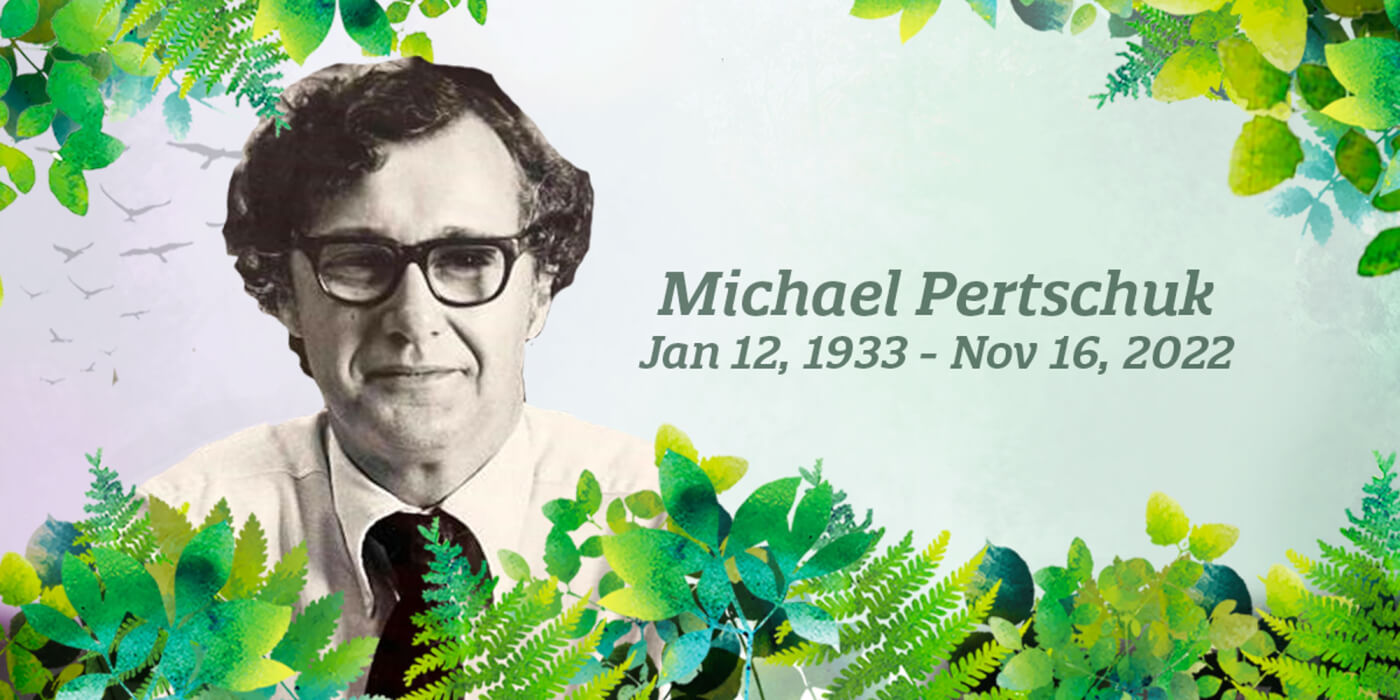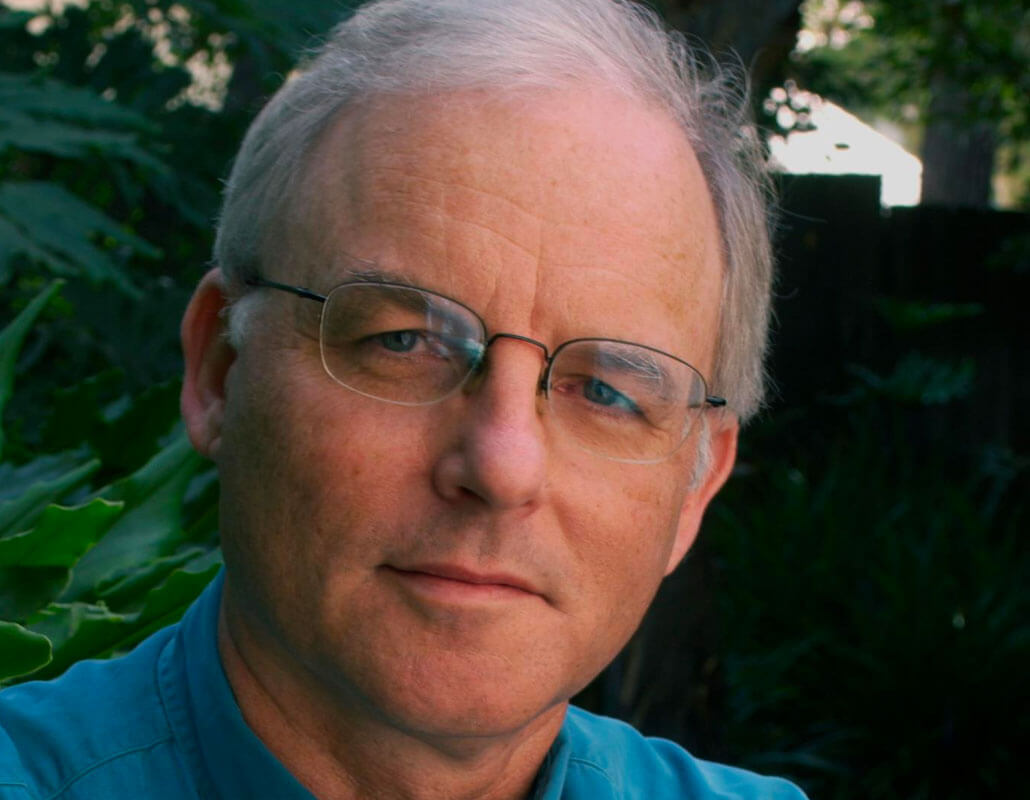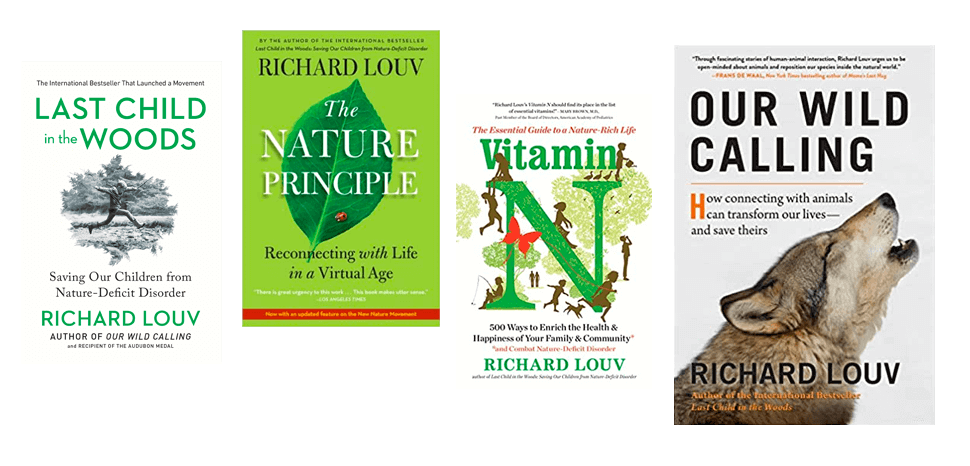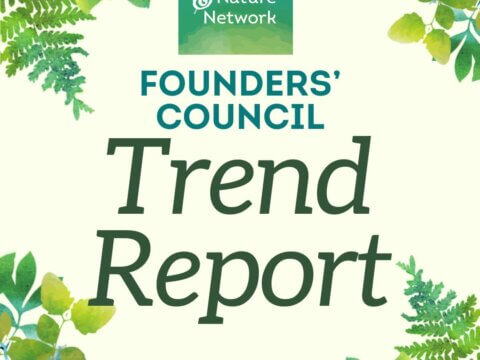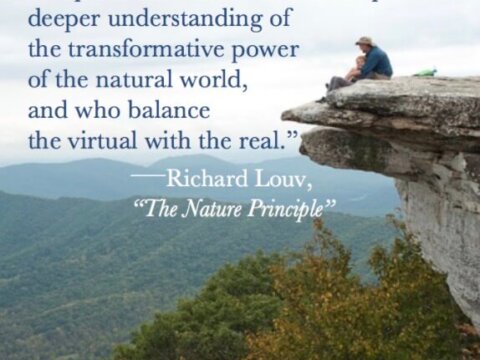A force of nature: Remembering Michael Pertschuk, Children & Nature Network co-founder
Mike Pertschuk was a force of nature. My first and lasting impression of him was in 2004, as a harried, hurried, happy man racing into a room with stacks of paper under his arms or following him in the air. I also remember him as one of the kindest human beings I’ve ever met.
On November 16, at the age of 89, Mike passed away. His wife, Anna, and daughter, Amy Pertschuk, were at his side.

Michael Pertschuk
I first worked with Mike, co-founder of the Children & Nature Network, when his DC-based nonprofit, the Advocacy Institute, was managing the Ford Foundation’s Leadership for a Changing World awards. These awards, presented in the mid-2000s, went to grassroots leaders around the country working for racial, economic, and environmental justice.
Mike mentored many of them.
His list of achievements is remarkable. As a Senate staffer and Federal Trade Commission chairman, appointed by President Jimmy Carter, “he played a key role in some of the most significant gains in the consumer protection movement,” according to The Washington Post. His colleague Ralph Nader called Mike the most “ferocious consumer advocate on a congressional staff in American history.” Nader also said, “He touched every person in this country.” In the 1960s, Mike drafted the legislation that required cigarette packages to bear the now familiar warning: “Caution: Cigarette Smoking May Be Hazardous to Your Health.”
He also shaped legislation that banned cigarette advertising on radio and TV. He helped enact the Consumer Product Safety Act of 1972. He wrote books. He continued the fight against Big Tobacco overseas. Mike is credited by many with saving millions of lives.
Much of his focus was on children’s health. With the Benton Foundation and communication strategist Susan Bales, Mike helped develop messaging for a coalition of over 300 organizations campaigning for children’s issues.
And Mike played a formative role in the birth of the Children & Nature Network.
In 2005, the disconnect between children, parents and communities and nature was not seen as a national issue. Good people and programs were already helping kids and families experience the natural world, but these often-specialized programs tended to work in isolation and with insufficient funds. What could bring them together and multiply their collective power? What strategy might help create a popular movement, here and in other countries — a movement that would not only affect policy and systems, but change the culture?
When I was finishing writing “Last Child in the Woods,” I asked Mike those questions. And this one: What could we learn from other social movements, including the anti-smoking movement?
Here are his answers, which I quoted: “Unlike the civil rights and labor movements, the tobacco control movement developed top-down, stemming from scientific research and public statements of concern by health authorities; simultaneously, but unconnected at first, the anti-smoking movement was also bottom-up, born out of the pain and shortened lives from passive smoking — breathing the tobacco smoke from others’ smoking habits.”
“It was only when the science of passive smoking’s threat to the lives of involuntary smokers — now scientifically labeled ETS, Environmental Tobacco Smoke — was proved beyond question that these two half-movements came together,” he added. “And it was only the combination of potent scientific authorities and the passionate outcry of organized community neighbors, in small groups operating out of attics and garages challenging the accepted norms that gave smokers ownership of the air they polluted, that a movement that would radically change social norms took root.”
National groups, including lung and heart health associations and cancer advocacy associations, joined. They organized and lobbied for laws to create smoke-free environments, backed by massive public education campaigns on the health benefits of smoke-free air.
“Just so, the budding movement to reconnect childhood to nature draws potent support from the science of the health risks of nature-parched childhoods, and the growing passion of parents and others who see their children shuttered up on their couches and computer stands. And just so, this movement will rise from the awareness and determination of individuals as well as from organized, national networks,” Mike advised.
At the time, I thought the chapter I’d written in “Last Child” imagining a new movement was probably wishful thinking. But then an unexpected response to the book, growing concern among parents about the impact of electronics and fear in their children’s lives, the intensified dedication of programs already working on the issue, and an expanding body of scientific evidence set the stage for the creation of a network that would link them together, support their work, and amplify the cause: the Children & Nature Network.
Mike and others stepped up to make that happen.
In addition to Mike, our earliest team included Amy Pertschuk, who had extensive experience using the Internet to build public awareness; Martin LeBlanc, who then worked for the Sierra Club and later secured initial funding for the newly formed Children & Nature Network (C&NN); and Cheryl Charles, C&NN’s first president and CEO, who brought a rich history in children’s advocacy and organizing. Soon after, others joined, including Marti Erickson, one of the country’s leading researchers in children’s health.
“Mike was key in helping formulate the overall approach that would be needed to create an organization that would facilitate a movement,” recalls Cheryl. “He started the process of incorporating the new nonprofit. He signed the official incorporating documents in March of 2006… He was clear that he would help establish the legal framework for the organization, and, equally so, had no intention of serving as a board member past the initial phase of incorporation and application to the IRS. Marti joined the board so we became a five-person working board. Mike always remained available to us all. I am forever grateful.”
Indeed, we all are. C&NN now offers the largest available research library related to our shared cause. Yearly, it hosts the largest gathering of people and programs dedicated to connecting children, families, and communities to nature. It works with parents, pediatricians, educators, mayors, legislators, and many others. It is deeply committed to equitable access to nature, regardless of children’s set of abilities, race, or zip code. It brings people together across cultural, religious, and political barriers to make that happen. And as always, C&NN is dedicated to the principle that all children need and deserve the gifts of nature.
Mike helped plant the seeds for all of that.
“I will always remember our first meeting in Berkeley, and Mike’s influence and impact,” writes Martin LeBlanc, former vice president of C&NN. “His values (were) instrumental to where we are today. He did it with grace, humor and the utmost focus on where we could go as an organization — and also on how to be a movement that is inclusive, and how to make the need for nature access to be seen not as a nice-to-have, but a need-to-have.”
“Mike’s life was clearly the life of a public servant and his contributions to C&NN, as expressed by my colleagues, are immeasurable,” writes Gail Christopher, a former C&NN board member and leading force for health equity and racial healing.
“What a giant of a person,” Howard Frumkin, former C&NN board member and now Senior Vice President at the Trust for Public Land, writes. “And what a legacy he left. His formative work for C&NN would be more than enough to inscribe him in the Book of Life.”
“Mike was a truly remarkable man. So many things in all of our lives are better because of his work,” wrote Sarah Milligan-Toffler, C&NN President and CEO.
And co-founder Marti Erickson shared this: “Amy was blessed to have such a father, and our movement continues to be blessed by both Mike and Amy’s contributions.”
So, our beloved Amy Pertschuk should have the last word: “Yes, the memories of those early days are as vivid as ever. Such a gift to C&NN to have had his leadership at that critical time. The number of stories and tributes from others he mentored in this way is overwhelming.”
-
Network News
POLICY UPDATE: Policy and advocacy for the children and nature movement
-
Voices
Binoculars, bald eagles and my journey as a Black birder
-
Richard Louv
THE WONDER BOWL: Ten Spring and Summer Nature Activities for Kids and Adults
-
Network News
Minneapolis Spotlight: The promise and possibilities of parks for youth
-
Voices
Why nature is my motherhood ally


